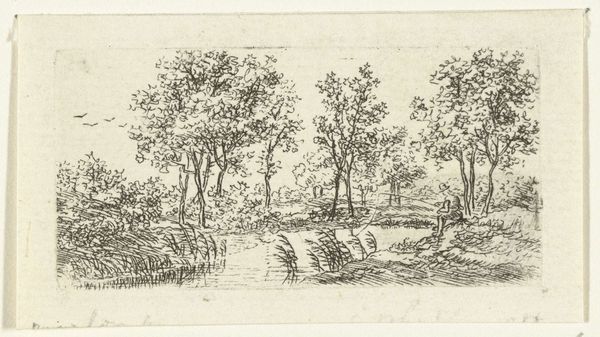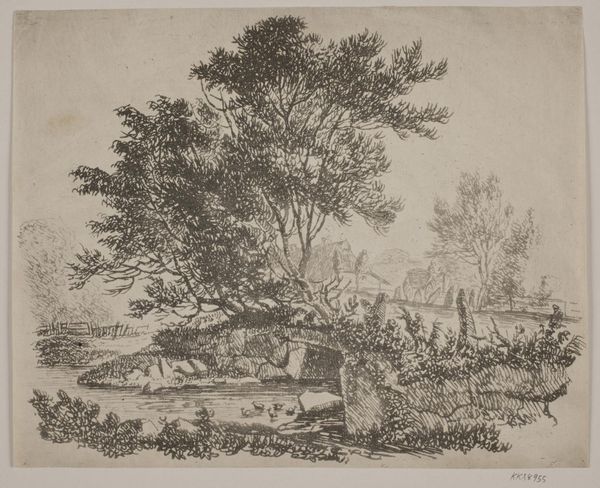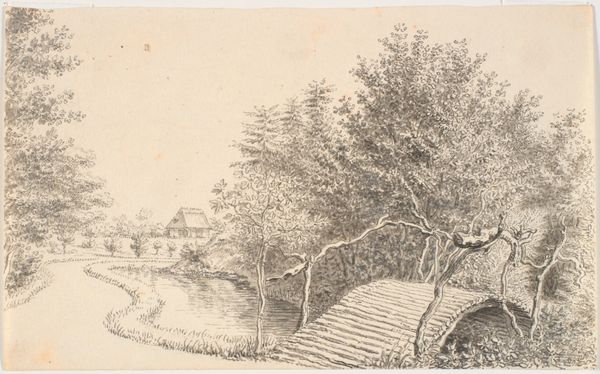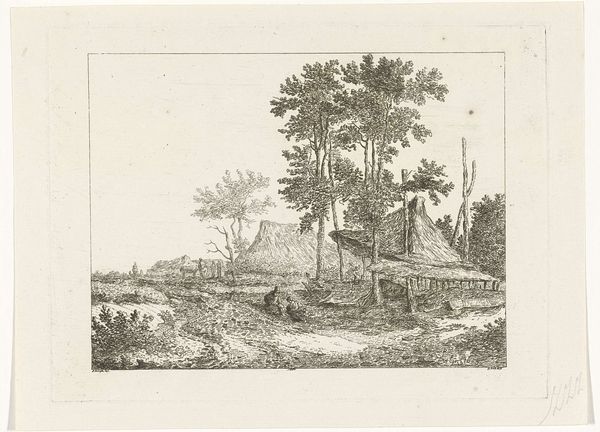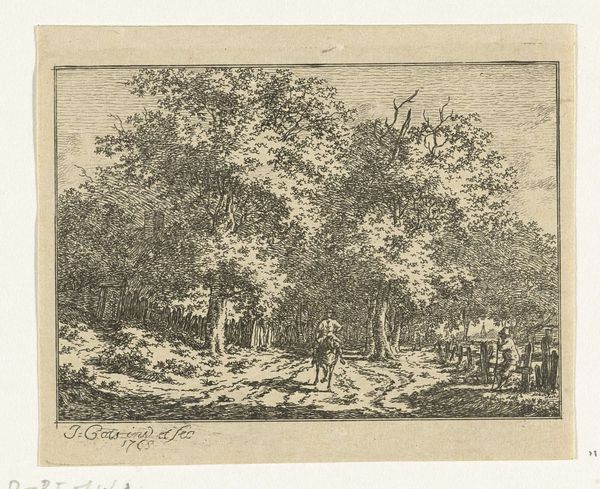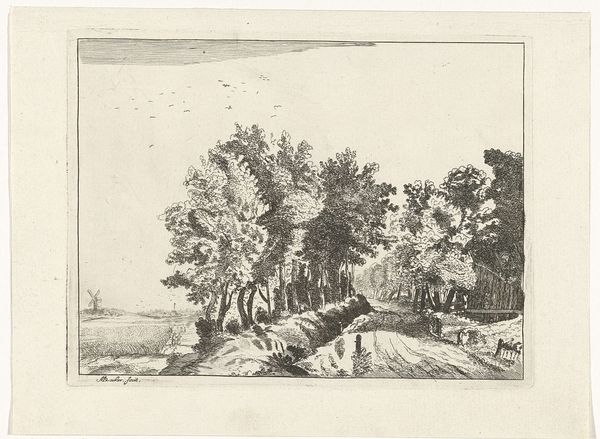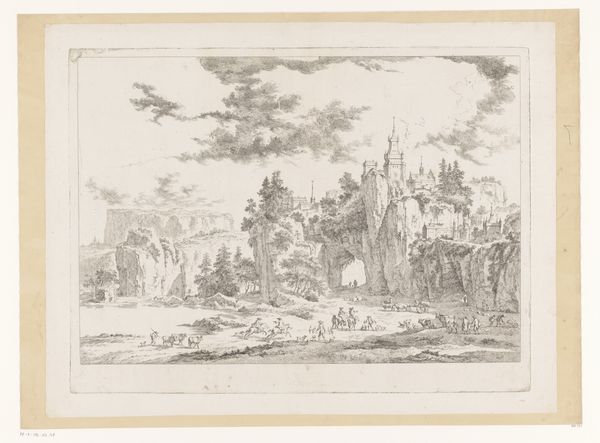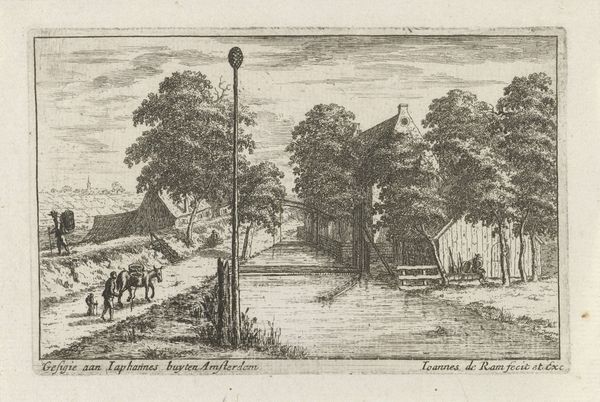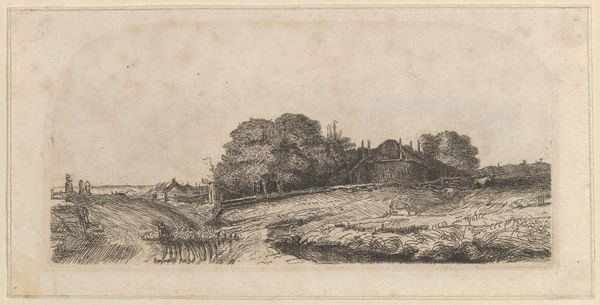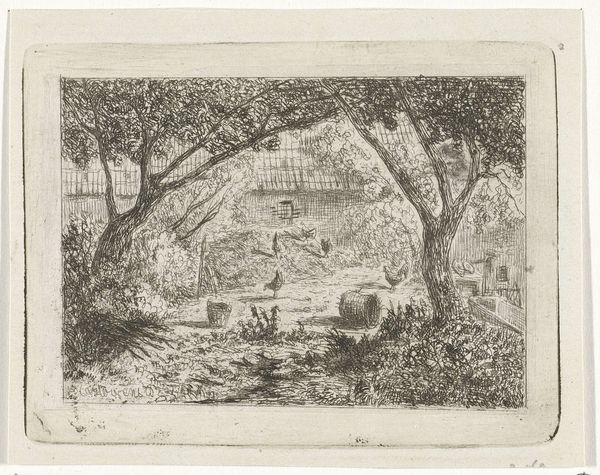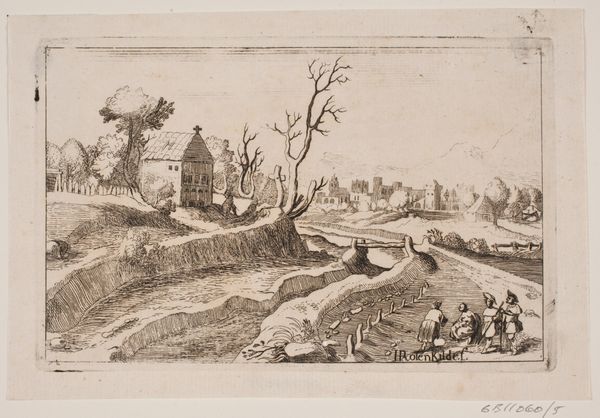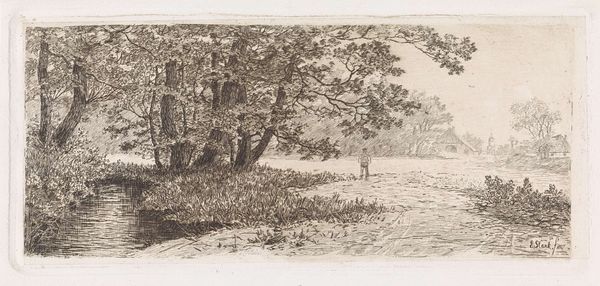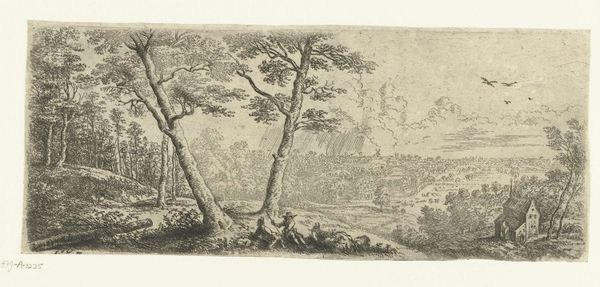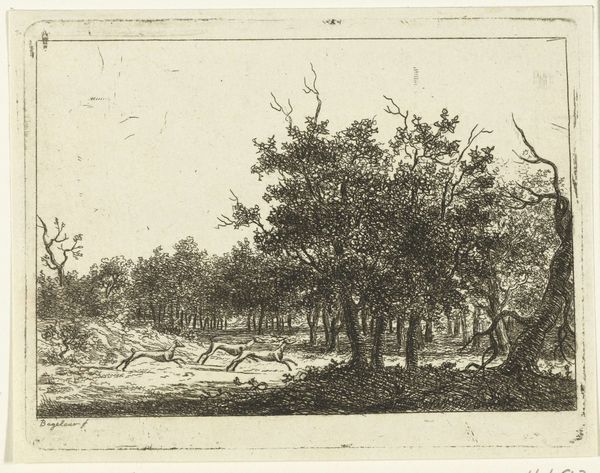
drawing, print, etching, ink
#
drawing
#
pen drawing
#
dutch-golden-age
# print
#
etching
#
landscape
#
ink
Dimensions: height 90 mm, width 163 mm
Copyright: Rijks Museum: Open Domain
Editor: This is Philips Koninck’s "Landscape with a White Fence," created in 1659 using etching and ink. It feels almost like a captured moment, a fleeting glimpse of 17th-century Dutch life. What story do you think Koninck is trying to tell us with this piece? Curator: It's interesting that you see it as a "fleeting glimpse," because Koninck, like many of his contemporaries, was deeply invested in depicting the Dutch landscape as a reflection of burgeoning national identity. This wasn’t just about pretty scenery; it was about claiming space, defining "Dutchness" in relation to land ownership, agricultural practice, and the rise of a mercantile class. How does the presence of the white fence in the foreground play into that narrative? Editor: It feels like it marks a boundary, a separation of public and private spaces. The people further off in the distance seem to belong to the wider world, but there’s a sense of domesticity confined by that fence. Curator: Exactly. Fences aren't just about keeping things in, they're also about keeping things out, enforcing a kind of social order and property right. In the context of the Dutch Golden Age, consider how these ideas might relate to issues of class, gender, and access to resources. Who gets to own this land, and whose labor contributes to its value? Editor: So the artwork isn't just a nice landscape, but also a representation of power structures present during that time. It really highlights how landscape art isn’t always just about what is aesthetically pleasing. Curator: Precisely. Koninck is subtly prompting us to think about who benefits from this carefully constructed environment and, equally important, who does not. Art is very rarely a neutral ground; it is usually situated on multiple planes, both material and societal. Editor: This has totally reshaped how I’m viewing it now, I can understand how to apply theoretical frameworks to evaluate art! Curator: The pleasure's all mine; art can give a lot to those who actively seek its many connections.
Comments
No comments
Be the first to comment and join the conversation on the ultimate creative platform.
